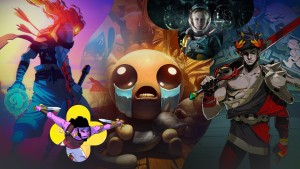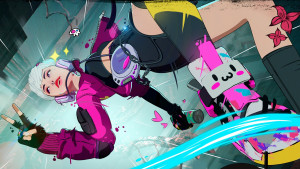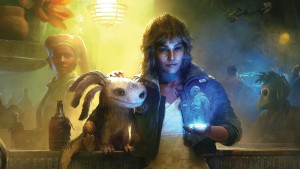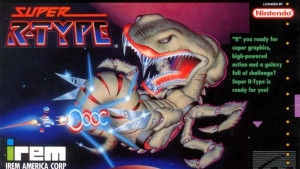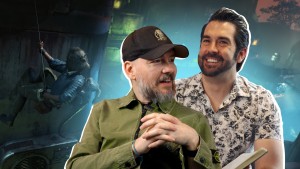Please support Game Informer. Print magazine subscriptions are less than $2 per issue
Revisiting The Past Three E3 Report Cards
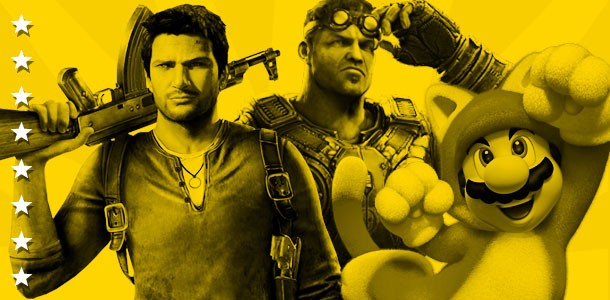
Forget pro StarCraft or League of Legends; E3 press conferences are one of gaming’s most satisfying spectator sports. The three-way matchups between Nintendo, Microsoft, and Sony, have provided some of the industry’s most thrilling highs and lowest lows. Sifting through their aftermath is a dependable form of entertainment, too. As we head into E3 2014, we’re taking a look at the past three conferences and recapping how each company has done over the years.
Each recap is accompanied with the letter grade that it received in the post-E3 issue of the magazine of that year.

2011: C-
Now that Kinect was out, Microsoft spent its first post-launch E3 trying to convince players that the device had useful applications beyond Dance Central and pausing Netflix. It wasn’t completely successful, showing voice commands in Mass Effect 3 and a virtual shooting range in Ghost Recon: Future Soldier. Crytek’s Ryse was revealed, though the game would leapfrog over the Xbox 360 and become a launch game for the Xbox One. Cliff Bleszinski and Ice T presented a Gears of War 3 demo, and Microsoft teased the upcoming Xbox 360 dashboard redesign. The new dash was heavily inspired by the company’s Metro UI, which has continued to inform Xbox’s interfaces through the Xbox One.
2012: C+
E3 2012 marked a year of transition for both Microsoft and Sony, since neither company was prepared to announce their next-gen offerings. Microsoft decided to continue its push for Kinect, since the technology would be a key component of the Xbox One – at least for a while. Third parties had to do the heavy lifting, however, since Microsoft’s first-party developers were busy working on titles for the then-unannounced console. That meant viewers got to see how voice commands could be used in demos of FIFA 13, Madden 13, and Splinter Cell: Blacklist. Microsoft also touted indie games like LocoCyle, Ascend: New Gods, and Gore Verbinski’s Matter (the latter of which was later canceled). SmartGlass made its debut, too, with a demo that showed how Game of Thrones viewers could explore maps and character profiles using a companion app while watching the program. The press conference ended with a trailer for Gears of War: Judgment.
2013: C
Microsoft had a lot of ground to recover following its recent Xbox One reveal event. The company spent much of that presentation focusing the device’s all-in-one media capabilities, which left some gamers cold. Plus, there was the reaction to the console’s always-online requirements and DRM that could prevent used games from working on the system. Titanfall remained an exciting exclusive, and a series of reveals including Dead Rising 3, Forza 5, a new Killer Instinct, Sunset Overdrive, Quantum Break, Ryse: Son of Rome, and a new Halo looked promising as well. The console’s price was announced, too, at $499. Unfortunately for Microsoft, Sony’s press conference later that day would bring consumers’ simmering discontent to a boil. A week after E3, Microsoft reversed course on the console’s controversial online and used-games policies, but the damage was done.
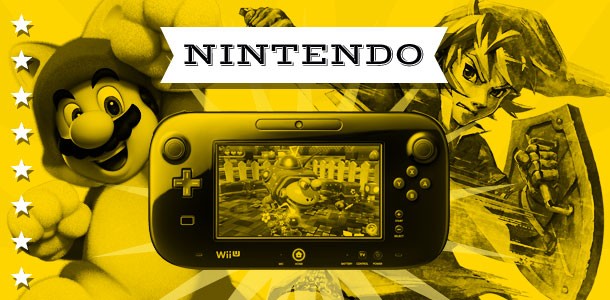
2011: C+
Nintendo started its press conference with a nod to The Legend of Zelda. The series celebrated its 25th anniversary that year, and Nintendo announced that it was marking the milestone with a variety of concert dates and game releases – including the 3DS remake of Ocarina of Time and the release of Skyward Sword for the Wii. Nintendo’s handheld had a strong retro showing, with games including Mario Kart 7, Super Mario 3D, the Star Fox 64 remake, Kid Icarus Uprising, and Luigi’s Mansion 2 getting a moment on stage. The 3DS was still in its infancy at the time, and these games showed that Nintendo was fully behind the system, even with its slower-than-anticipated sales.
The biggest moment came with the official announcement of Nintendo’s successor to the Wii. The system’s name – Wii U – was met with polite applause, though jokes at its expense would follow shortly. In the meantime, the system was shown in a video that perhaps focused too much on its compatibility with existing Wii peripherals like the Wii Fit balance board and Wii remotes. The video failed to highlight clear shots of the system itself, and some viewers left confused as to whether they were looking at a new console or a new GamePad controller that worked with the Wii. The presentation ended with vague talk of games like a new Pikmin and Smash Bros., but mostly tech demos, which were playable on the show floor.
2012: D+
This E3 was Nintendo’s last big chance to make a case for the Wii U before it launched a few months later. Unfortunately, it was a moment squandered. The company spent an uncomfortably long time on Nintendo Land, a minigame collection that came packed in with the Wii U’s deluxe edition. As we’d learn later, it was fun in a party setting, but the demos sucked the excitement from the auditorium. The time spent on Nintendo Land could have been better spent showing games like Pikmin 3 and New Super Mario Bros. U. Third-party games including Mass Effect 3 and Batman: Arkham City were also shown during the press conference, but they didn’t generate much enthusiasm. Nintendo did end its briefing with a “one more thing” moment – which turned out to be another quick look at Nintendo Land.
2013: Incomplete
Nintendo’s 2013 E3 presence inspired us to give the company an “incomplete”– our first-ever use of such a grade. The company opted out of the show in one significant way, choosing to relay its message via a Nintendo Direct rather than a traditional press conference. Nintendo had an invite-only software showcase that featured a variety of games, including Super Mario 3D World, Donkey Kong Country: Tropical Freeze, Mario Kart 8, and the HD remake of The Legend of Zelda: The Wind Waker. As with most of Nintendo’s first-party games, they were all solid games, but the lack of any meaningful third-party support was (and continues to be) an ominous sign for the Wii U.

2011: B-
It might be hard to believe it now, but there was a time when PlayStation Move took up a fair amount of Sony’s E3 stage time. The company enlisted Irrational’s Ken Levine to lend the motion controller some core-gaming cred by getting him to talk about how the device would be used in BioShock Infinite. Sony addressed and apologized for the massive PSN security breach that compromised 77 million user accounts and led to the network being shut down for more than three weeks. Uncharted 3 and SSX got on-stage demos. Sony then gave some more Vita details, including its price point – $249 for the wi-fi version, and $299 for the version with 3G support. The audience laughed and groaned when Sony announced that AT&T would be the exclusive wireless partner for the handheld. Finally, in one of the last big pushes for 3D, the company announced a $499 3D bundle, which included a 24” 3D display, two pairs of 3D glasses, and an HDMI cable.
2012: B-
Sony ended its 2012 presentation with an extended demo of The Last of Us. It’s a good thing the game looked so great, because it had to follow a series of yawn-inducing and cringe-worthy moments. Beyond: Two Souls and PlayStation All-Stars Battle Royale were demoed, and neither one excited viewers. Support for the Vita, which had launched the previous holiday season, was sparse. Third parties came to the rescue, with Activision showing off Call of Duty: Black Ops – Reclassified and Ubisoft revealing Assassin’s Creed III: Liberation. Sony gave an excruciatingly long demo of its new Wonderbook, a PS3 device that worked in tandem with the camera peripheral. It was intended to bring books to life, but its demo, featuring Harry Potter’s Book of Spells, was plagued with technical errors that made the presentation difficult to watch. Sony also provided a new look at God of War: Ascension.
2013: A
Sony’s 2013 E3 press conference was a point-by-point dismantling of Microsoft and its Xbox One. Then-president and CEO Jack Tretton told the crowd that the PS4 wouldn’t require users to be online, and that it wouldn’t prohibit used games or loaning games to friends. Then came the demos, including looks at Killzone: Shadow Fall, DriveClub, Knack, Final Fantasy XV, and the long-awaited Kingdom Hearts III. In another slam against Microsoft, Sony got Bungie – best known for its work on the Xbox-exclusive Halo series – to show off their new multiplatform game, Destiny, on its stage. The presentation ended with an exclamation point: The PlayStation 4 would sell for $100 less than the Xbox One. That presentation set the tone for the Sony vs. Microsoft battle, from which Microsoft continues to feel the effects.


